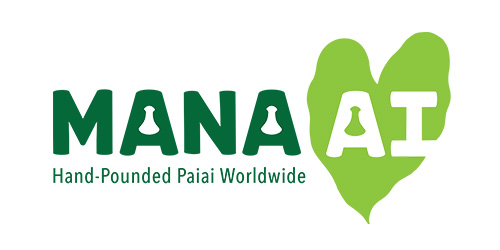What is Paiai?
Taro

A Pacific crop prized for its leaves and corms originally enjoyed by all Austronesian-speaking peoples. At one time, there were over 300 varieties of taro grown in Hawaii. Today, though, there remain less than 100 known varieties. The taro varieties we commonly work with vary in color – from the yellow Mana Ulu to the snow-white Lehua – and in starch content. All of our taro, though, is premium-grade Hawaiian kalo.
A Cultural Perspective:
Taro is a central figure of Native Hawaiian cosmogenesis. Two gods – Papahanaumoku, Earth mother, and Wakea, skyfather – fell in love and had a child, Hoohokukalani, she who gives birth to the stars. Wakea fell in love with Hoohokukalani and in a sacred bond, the two produced a stillborn child. They buried this child on the eastern side of the house and from this grave grew the first taro plant, which was named Haloanakalaukapalili, the long stem whose leaves tremble in the wind. Wakea and Hoohokukalani produced another child who was born the first kanaka, the two naming him Haloa after his elder brother. From then on, the Hawaiian people had a responsibility to care for their elder brother, who in return would care for them.
Paiai and Poi

After steaming and cleaning the corm, taro is pounded with the least amount of water on a wooden board, papa kuiai, using a stone pestle, pohaku kuiai. The starch molecules are crushed, forming a gummy mass of broke-da-mouth awesomeness fit for travel and long-term storage. When the Native Hawaiians navigated by canoe throughout the Pacific, they were able to survive off fish from the sea and paiai. By crushing the starch molecules, the substance begins to ferment in a process not unlike the production of sauerkraut, kimchee, cheese, or daikon. All of these fermented foods rely on the beneficial bacteria lactobascillus. This beneficial bacterium, naturally found in our intestinal tract, has been linked with fighting cancer and staving off the onset of rot and the growth of harmful bacteria.
The difference between paiai and poi is water content. Paiai is undiluted poi, while poi is diluted paiai. Both are, however, super-foods with more than 1000 years of preparation and taste buds behind them.

